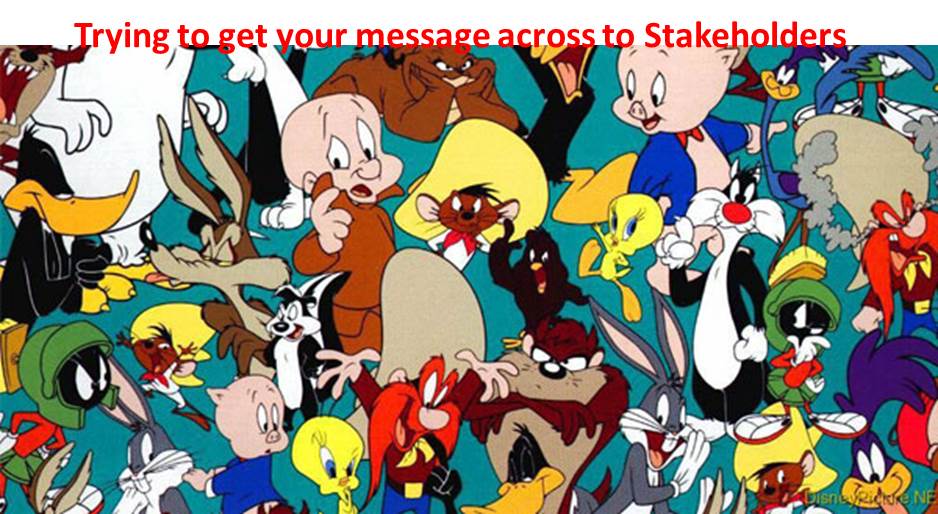A child of five would understand this. Send someone to fetch a child of five. Groucho Marx
Last Month, I discussed the “What” of change. For now, I’ll leave what needs to be changed and discuss some of the foundational communication issues that must be understood if change is to be successful. Much of this may be “stream of thought” kind of stuff, but when I finish all the parts of this subject – and I don’t know how many parts there will be right now – I’ll pull it all together. Please keep in mind that these principles are universal, because they have everything to do with human beings and how to communicate with them. These ideas and principles are applicable in every facet of life. Just try making changes to the annual church Christmas party sometime and see how well that flies.
You may, at this point feel like Groucho, but these tools are suggestions to help in your success. Adapt and use what you need for your situation.
Thomas Harris (1996) listed eight important questions that will have to be answered before change can take place:
- Upon whom will the change(s) have the most impact? What is that impact?
- For whom will the change(s) be the most difficult? What are those difficulties?
- For whom will the change(s) present the most exciting challenges? (These folks will be onboard from the get-go) What are those challenges?
- For whom will the change(s) have the most benefit? (Ditto question 3!) What are those benefits?
- Who or what is most likely to attempt to block this change(s)? (As my old auntie used to say, “It all depends on whose ox is being gored.”)
- Who or what is most likely to attempt to sabotage the change(s) when implemented? (“See, I TOLD you it wouldn’t work!”)
- What can you do to help those for whom the change will be the most difficult?
- What are your rewards for helping the change go smoothly?
You’ll notice that these questions all have to do with people. It does no good to evaluate logistical resources until you’re sure that those who will actually be involved in the change will be willing to make the necessary commitments. You can throw all the money in the world at a problem, but if there’s a stinker in the mix, good luck.
Answering these 8 questions may be very easy, but resolving the possible human conflicts may be insurmountable without eliminating human obstacles. Don’t let your personal ego and perceived charisma fool you. There are some people that are what Stalin called “Wreckers”. Their joy comes from seeing failure in others. No matter how nice you are, forget about it. These may raise their ugly heads days, weeks, months after change has been implemented. The answers to questions number 5 & 6 are more foundational to failure than the others are to success. Know your people.
So, now, with this in mind, sit down and do a Stakeholder Analysis. To do this, generate a matrix like this:
|
Who (Which members of your practice or other involved stakeholders will be impacted?) |
Their Stake (What will be impacted?) | Their Power (See below) | Impact of Change on Their Surroundings |
|---|---|---|---|
| Office Manager | |||
| Front Desk | |||
| Hygiene | |||
| Assistant 1 | |||
| Assistant 2 | |||
| Assistant 3 | |||
| Etc. |
Their Power: (Harris, 1996)
- Information: what do they know, control, etc.?
- Relationships: to who are they connected and what influence do they have?
- Resources: which resources, important to your changes success, do they have influence over?
If you want to dig deeper on each individual, you could ask yourself these questions (Harris, 1996):
- How will the change impact their power? For example, will it by-pass it? Reduce it?
- Status: will there be changes to titles, reporting, etc.
- Rewards: what will be the effect on their broadly defined rewards?
- Bosses: how will this affect their relationship with their supervisor?
- Knowledge: will the change require more learning, or will it better utilize their current skills?
- Visibility: will there be a change to their visibility in the practice, and how important is this to them?
Changes in your organization may be large, strategic changes, or small procedural changes. The human requirements can seem daunting, but the secret is to make sure to communicate. Jumping into a change without considering all the stakeholders may very well result in failure. Most smaller changes won’t require a great deal of “human” analysis, but, knowing your employees and considering the impact change will have on them will help assure a much cleaner transition with a lot less heartburn.
In the next few blogs, we’ll cover other communication needs required for change.
Works Cited
Harris, T. (Copyright, 1996 by Thomas E Harris, PhD). The Leadership of Change. University of Alabama Master Management Certificate Program (Program Notes). Tuscaloosa: University of Alabama

